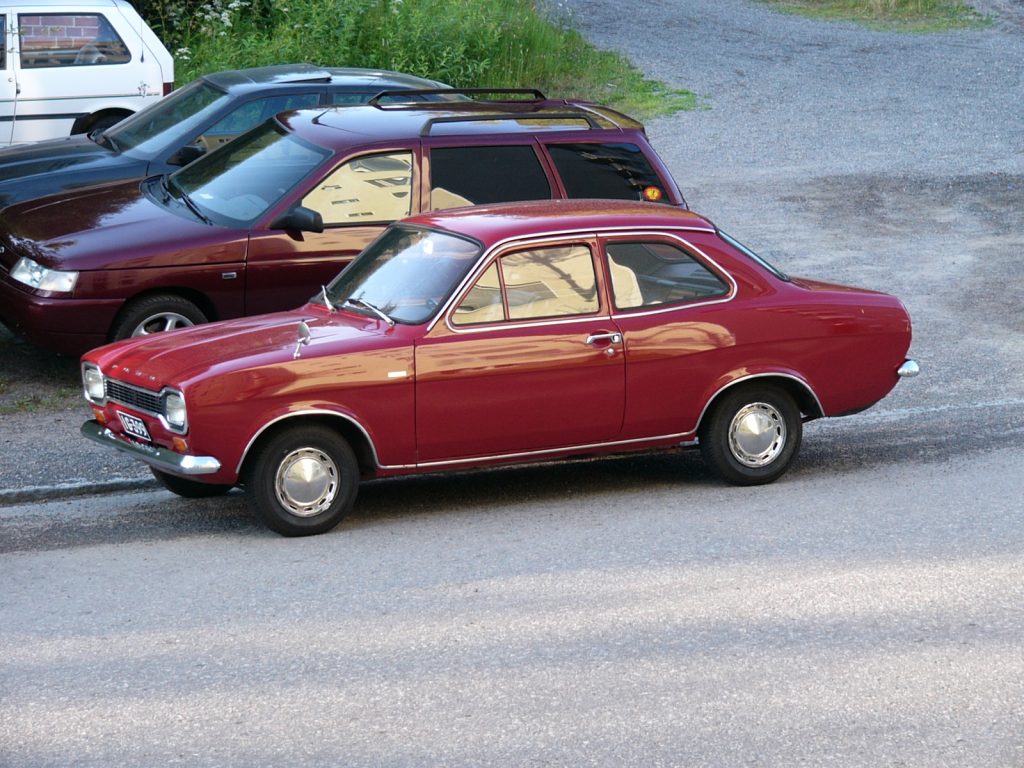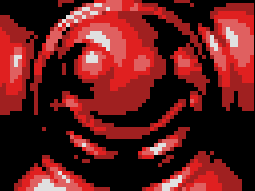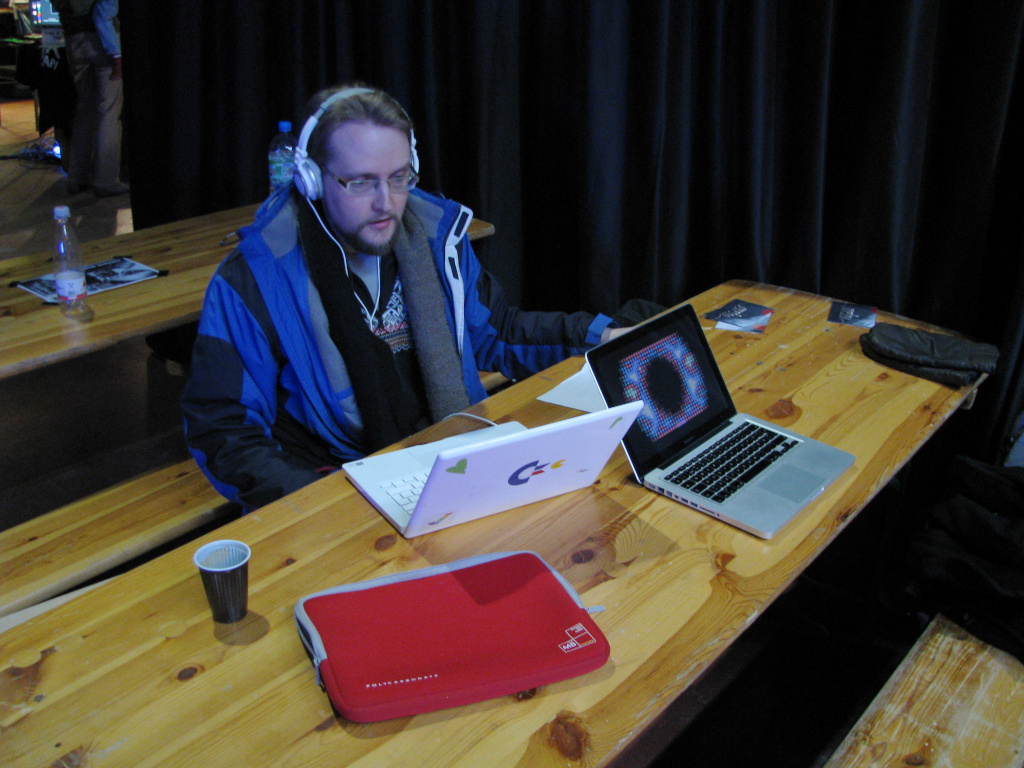Lieves!Tuore – How a Finnish MSX Demogroup Was Born
May 16th, 2024
Translated from a Finnish article published in Skrolli 2024.1, pages 6–7.
Markku “Marq” Reunanen sits in a rocking chair and reminisces about the history of the first Finnish MSX demogroup.
Text: Markku Reunanen
Photos: Markku Reunanen, Mikko Heinonen
In the summer of 1996 me and Mikko Heinonen, familiar from Skrolli too, had ended up as football coaches: a new team called HJK Mini was put together from kids that didn’t fit into other teams and we, two students in our early twenties, were in charge of them. Two summers in the Vammala Football Club junior series earned us countless losses and one unforgettable victory. Mikko usually drove us to practice and matches in his red Ford Escort, which also got the honor to be the birthplace of the first Finnish MSX demogroup.
In the mid-1990s retro already started to be cool and we, too, thought that it would be nice to found an 8-bit demogroup. The Commodore 64 was the most popular old computer back then, but we omitted it because of too much competition. We went through the options from the Sinclair Spectrum to Amstrad CPC, until we got to their Japanese competitor, the MSX. Neither of us had any MSX experience, but the possibility to easily transfer data from the PC using 3.5″ floppies was enough to decide on the platform.
We both appreciated crazy wordplay and, therefore, picked the group name from a Central Finland village called Lievestuore, best known for Irwin’s 1971 hit song Lievestuoreen Liisa. In the 1990s group names with exclamation marks were fashionable for a while, so we had to parody them too. Other possible options were Pietar!Saari and Peräseinä!Joki, but the latter was dropped because of unsuitable Scandinavian letters.
Toward the First Demo
When the most important things, the platform and the name, were decided, it was time to start figuring out how to actually make demos for the MSX. As the first thing I got myself a Spectravideo 728 and an easily overheating Sony HitBit floppy drive. The Internet wasn’t quite like now in 1996, but we found everything necessary there nevertheless: a cross-assembler called TASM that ran on MS-DOS and PORTAR.DOC, which revealed the secrets of the hardware. Initially, all testing had to be done on a real machine, but only a couple of years later the fMSX emulator sped up work considerably.
Manu, also familiar from Skrolli, was recruited as a graphician – he had at least owned a Sony HitBit as a child. Pictures were drawn using the familiar Deluxe Paint either on the PC or Amiga, and a self-made converter turned them compatible with the MSX. Duke Nemo rendered a fast city flyby using 3D Studio for the first demo. In the mid-1990s it was common to remake “impossible” Amiga and PC demo effects, even if as blocky versions. SCREEN 3 with its 16 colors and a resolution of 64×48 pixels was a perfect fit for that.
A real demo needs a good tune as well, but PSG Tracker, found online, wasn’t good enough — we had already heard proper music from the same PSG chip on Atari ST demos (the MSX typically has a General Instrument AY-3-8910 or a Yamaha clone like the ST). The problem solved itself when we recruited Yrjö “Yzi” Fager, who quickly put together a quality sound routine as his first Z80 program, including a test tune called Aekrus, which also ended up as the name of the demo.
We were aware that there was more MSX scene activity in Holland, where they organized fairs, more or less the same as parties. One of the most notable, Tilburg’97, was drawing near, so we whacked Aekrus together to be shown there. Unfortunately, they tried to run it on an MSX2 at Tilburg and the home-made screen mode setting routine failed. Thus, the production was never seen there. Very well, better set the mode using a more compatible BIOS call. As standard as the MSX is supposed to be, it’s not that easy to get low-level code to run reliably across tens of different models.
Later Steps
After that other Finnish groups have also made MSX demos: at least Bandwagon, Jumalauta, Dromedaar Vision, Hedelmae and Hackers. The grand old man of the Finnish MSX hobby, Timo “NYYRIKKI” Soilamaa is behind several demos for the MSX Turbo R. In addition, NYYRIKKI organized the MSX Info Update meetings, where demosceners could showcase their skills in the music and demo competitions.
The first wave of Lieves!Tuore activity lasted until the end of the 1990s, after which there was a break of almost ten years. When MSX Info Update 2008 was drawing near, we made a comeback and rushed a very unfinished version of Atsaas to the competition. At this point blocky graphics were already outdated and 8-bit effects had started putting the hardware into better use. In the same vein, Atsaas runs in the high resolution SCREEN 2 mode with 256×192 pixels. The old tools had been replaced by the SDCC C cross-compiler, openMSX emulator and Photoshop.
The most important productions of the second wave are the image collection Adnukes, which pushed the envelope of MSX flicker graphics, the robot demo Amurisus, coded on the way to Revision’13, and Atsarias, which was released at the Alternative Party the same year. The latter two represent a certain return to the roots with their blocky aesthetic, even if they’re not particularly traditional MSX demos otherwise. At our 20 years anniversary at Vammala Party 2016 we still managed to release pictures, a tune and two little demos, but now – oops – eight years have passed again without new productions.
Today’s advanced cross-compilers, emulators, trackers and version control systems make it easier than ever to create MSX demos, so the biggest limiting factor is the middle aged person’s lack of time. Maybe as a pensioner then? In any case, Lieves!Tuore, founded on a whim, will turn 30 soon, whereas many serious groups have disappeared from the face of the Earth. Perhaps this relaxed attitude is the key to longevity?



Kommentin kirjoitus
You must be logged in to post a comment.
RSS feed for comments on this post.